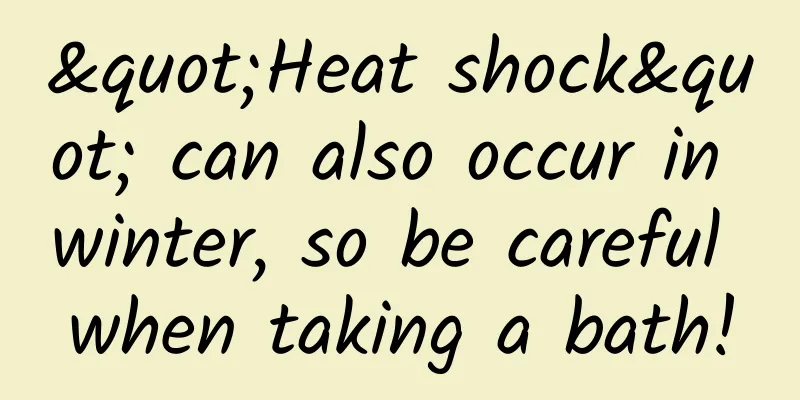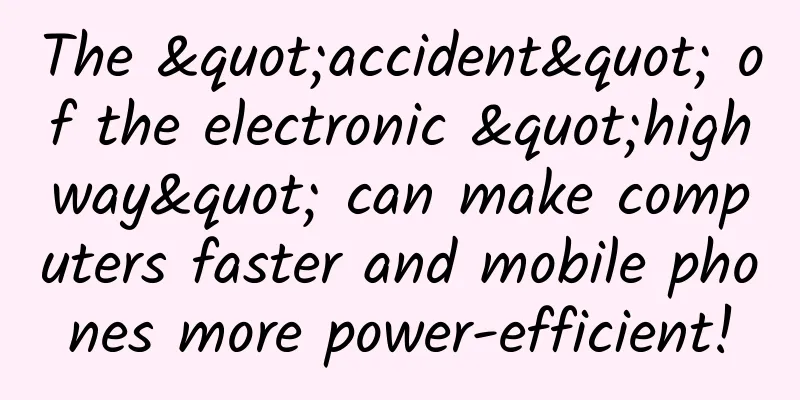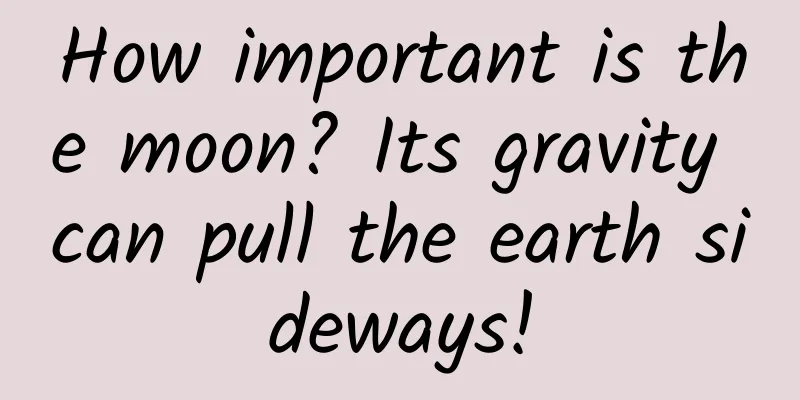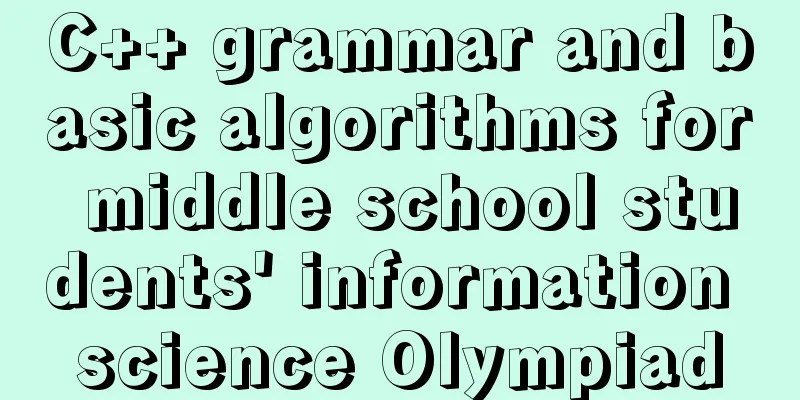A structure that a child can make has puzzled the mathematical community for 50 years
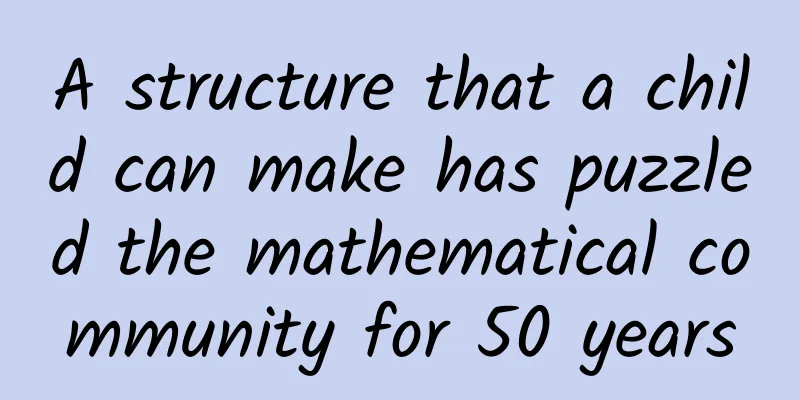
|
Not long ago, the famous mathematician Richard Evan Schwartz announced that he had proved the 50-year-old Halper-Weaver conjecture. In the words of mathematician Tabachnikov of the University of Pennsylvania, Schwartz's academic style is "to like to tackle problems that are simple and clear but generally recognized to be difficult. And he usually sees things that previous researchers have not noticed." Written by | Jiawei 1 The Möbius strip is a profound, important and fundamental concept in analysis, topology and geometry. However, surprisingly, unlike other objects of study in modern mathematics, it is not only not abstract and difficult to understand, but also very concrete and intuitive: even a child can easily make a model of a Möbius strip with a thin paper strip. Making a Möbius strip with a thin paper strip | Image source: Book "From Möbius to Chern: Möbius Transformation and Möbius Strip", Liu Peijie, Harbin Institute of Technology Press However, I wonder if you have ever thought about the following question: If we choose a "wide" paper strip instead of a thin paper strip, such as a square piece of handmade paper (aspect ratio of 1:1), can we make a Möbius strip without tearing the paper? (Spoiler, if there are no other additional conditions, the answer is yes. But it requires a very clever method, you may wish to think about it yourself first.) If we further "mathematicize" the above problem and ask "What is the minimum ratio of the length to width of the wide paper tape so that we can make a smooth Möbius strip?" In fact, for the past 50 years, the mathematical community has been unable to solve the above problem - until August 24 this year, when the famous mathematician Richard Evan Schwartz gave the answer in a very clever way (more than half a month later, on September 13, he updated his paper). 2 As for the Möbius strip in topology, two German mathematicians, August Ferdinand Möbius and Johann Benedict Listing, independently discovered this geometric structure in 1858. (Moira Chas, a mathematician at Stony Brook University, has verified that Gauss had recognized the existence of this one-sided surface earlier.) Mathematician and astronomer Möbius is also considered a pioneer of topology. He was the first to define the nature of topology. In his Theorie der Elementaren Verwandschaft (Theory of Elementary Relations), published in 1863, he considered two figures whose points form a one-to-one correspondence, in which adjacent points correspond to adjacent points, and he was the first to propose studying the relationship between two figures in this way. In the following 160 years, topology - the study of geometric figures or spaces that retain their properties after continuous changes of shape - flourished and became one of the most important branches of mathematics. The Möbius strip also showed extraordinary importance. It itself has many wonderful properties that have not been fully revealed to this day. As mentioned before, this "simple" problem has been puzzling topologists for half a century: if a rectangular paper tape has a width as unit length, what is the minimum length of the tape so that we can use it to make a "smooth" Möbius strip? Although the paper tape in the minds of mathematicians is a kind of ideal mathematical object - a simple surface that can be manipulated (no need to consider its thickness), it still retains the basic characteristics of a "physical" paper tape: ① Paper is not elastic, so it cannot be stretched; ② The paper tape obviously cannot pass through itself without damage. As for the "smoothness", in layman's terms, it means that there should be no creases on the produced Möbius strip. From a professional perspective, a smooth surface means that there is a unique tangent plane at any point on the surface. However, points on creases, like sharp points on a plane, can have tangent planes in multiple directions. The condition of smoothness is necessary, otherwise the length of the paper strip can be smaller than its width, which is equivalent to changing the nature of the problem. Back to the previous question: Can we use a square piece of handmade paper to make a Möbius strip without tearing the paper? The answer is yes. Just fold the square handmade paper into a folded structure like an accordion as shown below. Treat the "paper accordion" as a paper strip, and then twist it 180 degrees (half a circle) as a normal Möbius strip, and then use glue to stick the two ends inserted into each other together. It forms a "compressed" Möbius strip, which is essentially the same as the common Möbius strip, except that we cannot unfold it into a normal Möbius strip without destroying the paper structure. Therefore, a paper strip with an aspect ratio of 1 can be used to make a Möbius strip when smoothness is not required. The accordion-shaped Möbius strip | Source: Thirty Lectures on Classic Mathematics The most standard smooth Möbius strip looks like this, with no "creases" on it. But the Möbius strip made with inelastic paper tape has a different appearance. | Image source: The author used mathematical to generate the image 3 In 1977, Princeton University mathematicians Charles Sidney Weaver and Benjamin Riggler Harper Jr. explored the idea of making smooth surfaces with paper tape. Serge Tabachnikov is a mathematician at Pennsylvania State University. His mentor is the world-renowned master of topology Dmitry Fuchs. They co-authored a textbook, Mathematical Omnibus: Thirty Lectures on Classic Mathematics. In Lecture 14, they introduced the paper tape Möbius strip and the Halper-Weaver conjecture in detail. In 2019, Richard Schwartz, a professor of mathematics at Brown University, read their classic textbook because of his collaboration with Tabachnikov. "As soon as I read that chapter, I was immediately addicted to it," he said later. 4 Schwartz announced that he had proved the Halper-Weaver conjecture in a paper he published on arXiv.org on August 24. After a quick review by other mathematicians, his proof is now generally accepted by the topology community. Schwartz himself is an authority on geometric group theory, a relatively new area of mathematics that began around the late 1980s; it explores finitely generated groups and seeks connections between their algebraic properties and the geometric spaces on which they act. He also made important contributions to the path problem of billiard balls, a dynamical system based on convex plane shapes. His research areas include dynamical systems, hyperbolic geometry, iteration theory, topology, etc. In 2002, Schwartz was invited to give a 45-minute report at the International Congress of Mathematicians held in Beijing; in 2003, he received the Guggenheim Fellowship. Richard Evan Schwartz explains Thomson's 5 point problem at the Newton Mathematical Institute on March 22, 2023 | Image source: Rothschild Lecture: Thomson's 5 point problem - YouTube However, the reason for the rapid acceptance of the latest paper, in addition to Schwarz's academic status and historical credibility, is the technique he used: managing to break the problem into manageable parts, each of which essentially requires only basic (modern) geometric techniques to solve. Max Wardetzky, a mathematician at the University of Göttingen in Germany, praised: "This proof method embodies the purest elegance and beauty." Strong mathematical creativity. "It is always difficult to use a formula to distinguish between self-intersecting and non-self-intersecting surfaces," said Fox, author of "30 Lectures on Classical Mathematics." "To overcome this difficulty, you need (Schwartz's) geometric insight. But this is so rare!" Interestingly, Schwartz made a "low-level" mistake at the beginning, which wasted several years. If it weren't for that mistake, "I would have solved this problem three years ago!" Schwartz said somewhat regretfully. In geometry, if there is at least one straight line passing through any point on a surface, then the surface is called a ruled surface. Another common way of saying it is that if a surface can be constructed by a straight line through continuous motion, then it is called a ruled surface. Taking three-dimensional Euclidean space as an example, the most common ruled surfaces are planes, cylinders, cones, and saddles. The famous Möbius strip is also a ruled surface. For ruled surfaces, there are some methods to decompose the surface into simpler plane structures. The basic shape of a Möbius strip made of completely inelastic paper tape. | Source: Greg Egan, a famous Australian science fiction writer The Möbius strip above is also a ruled surface. | Image source: Greg Egan, a famous Australian science fiction writer Due to some preconceived impression, Schwartz mistakenly believed in his 2021 paper that the structure decomposed from the Möbius strip should be a parallelogram. This led to failure. Schwartz tried many other strategies, on and off, for nearly two years before finding a successful proof. He recently decided to revisit the problem because he had an uneasy hunch that the method he was using in 2021 should work. In a sense, his hunch was correct. By this summer, Schwartz decided to experiment with concrete tape. In these experiments, Schwartz disassembled a Möbius tape model and realized, "Oh my god, the plane structure that came out of it is not a parallelogram at all. It's a trapezoid !" Realizing his mistake, Schwartz was first annoyed, then determined to use this new information to recalculate. "The corrected calculation gave the number I had conjectured," he said. "I was stunned... I didn't sleep for about three days just to write the proof." 5 Finally, this 50-year-old conjecture has been proven. "It takes a lot of courage to try to solve a long-standing unsolved problem," Tabachnikov said. "This is Richard Schwartz's academic style: he likes to tackle problems that are simple and clear but are generally recognized to be difficult. And he usually sees things that previous researchers have not noticed." On a related note, mathematicians already know that there is no limit to the length of a Möbius strip that can embed itself (although it would be cumbersome to physically make them). However, no one knows how short a strip of paper can be if one were to make a Möbius strip that has been twisted three times instead of just once. “There is the question of the optimal length-to-width ratio for a Möbius strip with an odd number of twists,” Tabachnikov says. “I expect someone will solve this more general problem in the near future.” From another perspective, Schwarz's proof is not the end of the problem. His proof only applies to smooth Möbius strips, not Möbius strips with corners or creases. These non-smooth Möbius strips should have smaller sizes (see the previous thinking problem) because they can fold together at the edges. Under smooth conditions, the infimum of the aspect ratio cannot be obtained. To achieve the infimum, we can only get this degenerate triangular Moebius band. | Source: The Optimal Paper Moebius Band, 2308.12641.pdf (arxiv.org) From a broader perspective, the study of paper tape Möbius strips belongs to a very young branch of mathematics - Paper Sheet Geometry (or "origami geometry"). Paper Sheet Geometry is the study of the shapes, properties and transformations of paper. It involves how to make various geometric figures, such as polygons, surfaces and solids, with paper, and how to solve some geometric problems, such as folding, cutting and scoring with paper. One of its important applications is the art of origami, also known as Origami. Origami is a technique of folding a flat sheet of paper into various complex three-dimensional shapes, such as animals, flowers and stars. Origami has many rules and axioms that can be used to describe the foldability and constructability of paper. Another application of Paper Sheet Geometry is cartonage (French for cardboard packaging). Cartonage is a technique for cutting, folding, and gluing multiple sheets of cardboard or paperboard into a variety of practical objects, such as boxes, folders, and books. Cartonage also needs to consider the thickness, strength and stability of the cardboard. Paper Sheet Geometry is combined with other mathematical fields, such as topology, algebra and combinatorics, to create many difficult problems that contemporary mathematicians are at a loss to solve. Such mathematical fields can not only intuitively reveal the complexity of abstract objects, but also connect mathematics with our daily lives, forming fascinating topics. And the Möbius strip is not limited to the field of mathematics. It also has some interesting applications in daily life. The principle of the Möbius strip is also used in the industrial field. The Möbius belt is a specially designed conveyor belt that changes the original flat belt from two inner and outer surfaces to a "single-sided" circulation. The stress caused by the transported material on the conveyor belt is changed from being borne on one side to circulating on both sides, thereby extending the service life of the conveyor belt. At the same time, the Möbius strip is widely used in art due to its very “accessible” nature. In fact, it is the most popular concept in science after the black hole. Artists often use this shape to explore the unique properties of space and form. The infinite nature of the Möbius strip and its interweaving with time and space make it a source of inspiration and a component of many works of art. For example, in the animated film "Mobile Suit Gundam: Char's Counterattack" released in Japan in 1988, the Möbius strip is used as a metaphor for fate: human beings are like ants walking on a Möbius strip, they can never escape this vicious circle, constantly repeating the same mistakes, and similar tragedies are constantly happening. Finally, I would like to share a related anecdote. The protagonists are the teenage American physicist Richard Feynman and his then girlfriend Arline (who later became Feynman's wife). Arline mentioned that their philosophy teacher had a catchphrase: everything has two sides, just like paper. Feynman said that this view itself needs to be reconsidered, and then he took out a piece of paper and made a Möbius paper ring on the spot in front of his girlfriend with the knowledge he learned from the encyclopedia. Arline was very surprised and brought the paper ring to school the next day. When the teacher picked up a piece of paper and started to give examples of things having two sides, she excitedly raised the Möbius paper ring, which surprised the teachers and students present. Postscript Ten years ago, I happened to read "30 Lectures on Classical Mathematics" and was attracted by the Möbius paper ring problem in Lecture 14 of the book. Therefore, I have a certain degree of intuitive understanding of the difficulty of the Halper-Weaver conjecture. Therefore, it was totally unexpected and exciting for me to witness the conjecture being proved ten years later—and it was proved by a topology authority who had read the same textbook and was attracted by the same problem, using relatively basic techniques. This is also the motivation for me to write this article. Finally, I would like to thank Greg Egan, a famous Australian science fiction writer. He participated in the discussion of the paper (reference [1]) and helped me understand some of the concepts in the paper. At the same time, Egan generously allowed me to freely use the demonstration video he made (the Gif used in this article was created by him). Egan is an anomaly in the science fiction world. Most of his science fiction novels are not hardcore, and often involve advanced knowledge of mathematics and physics. His long science fiction novel Schild's Ladder is considered by many science fiction fans to be the hardest science fiction novel in history. It is said that to understand this book, you need at least a university degree in physics. Therefore, he is also known as the king of hard science fiction. References [1] The Optimal Paper Moebius Band, 2308.12641.pdf (arxiv.org) [2] Thirty Lectures on Classic Mathematics, Dmitry Fuchs, Serge Tabachnikov, American Mathematical Society [3] Mathematician Solves 50-Year-Old Möbius Strip Puzzle - Scientific American [4] From Möbius to Chern: Möbius Transformation and Möbius Strip, Liu Peijie, Harbin Institute of Technology Press [5] Richard Evan Schwartz (brown.edu) [6] A Brief History of Algebraic Topology and Differential Topology, by Gan Danyan, Hunan Education Press [7] Möbius strip - Wikipedia This article is supported by the Science Popularization China Starry Sky Project Produced by: China Association for Science and Technology Department of Science Popularization Producer: China Science and Technology Press Co., Ltd., Beijing Zhongke Xinghe Culture Media Co., Ltd. Special Tips 1. Go to the "Featured Column" at the bottom of the menu of the "Fanpu" WeChat public account to read a series of popular science articles on different topics. 2. Fanpu provides a function to search articles by month. Follow the official account and reply with the four-digit year + month, such as "1903", to get the article index for March 2019, and so on. Copyright statement: Personal forwarding is welcome. Any form of media or organization is not allowed to reprint or excerpt without authorization. For reprint authorization, please contact the backstage of the "Fanpu" WeChat public account. |
>>: What on earth does this little bastard grapefruit have to do with pomelo?
Recommend
Lenovo TV has failed many times but has fought again and again: PC genes are still hard to give up
Lenovo will release a new TV next month that is eq...
The three guarantees service is in name only. Who is responsible for the chaos in mobile phone after-sales service?
While mobile phone manufacturers are constantly u...
Miscellaneous: MVC/MVP/MVVM (Part 2)
MVP The disadvantage of MVC is that it does not d...
Qingming Festival is coming soon, come and have a taste of spring!
Mixed Knowledge Specially designed to cure confus...
Download link of "Su Mang: Live a Beautiful Life | A Smart Way for Women to Live a Life without Hardship or Tiredness"
Download link of "Su Mang: Live a Beautiful ...
Amazing! This offshore wind turbine can withstand up to 17-level typhoon
At 13:37 on December 7, the world's first typ...
How to keep iOS interface smooth? Do you know these tips?
[[157616]] This article will analyze in great det...
5 key points to distinguish the quality of APP channels, saving you the cost of blind trial and error!
Faced with an increasing number of channels, CPs ...
Many people say it is a "hidden killer"! Seriously, everyone should be careful...
Expert of this article: Shi Zhaowen, deputy chief...
A nucleic acid sampling worker in Beijing was diagnosed! Experts urgently remind that masks should be worn like this →
According to the Beijing Municipal Health Commiss...
As a supervisor leading new people, how does a SEM bidding supervisor lead new SEM people?
This depends on the supervisor's ability to e...
How to operate Tiktok with a novice hand, and earn US dollars from 0 to 10,000 followers in 3 days
So today such a course comes out! Course Catalog:...
Congratulations! The Shenzhou 17 manned spacecraft was launched successfully
On October 26, the Long March 2F Yao 17 carrier r...
Are sprouted potatoes poisonous? Eating these 9 foods incorrectly can cause "poisoning", so be careful when eating them!
Recently, the news #Girl fainted and was sent to ...
Is MR the next stop for VR?
By putting on a pair of glasses, you can interact...
